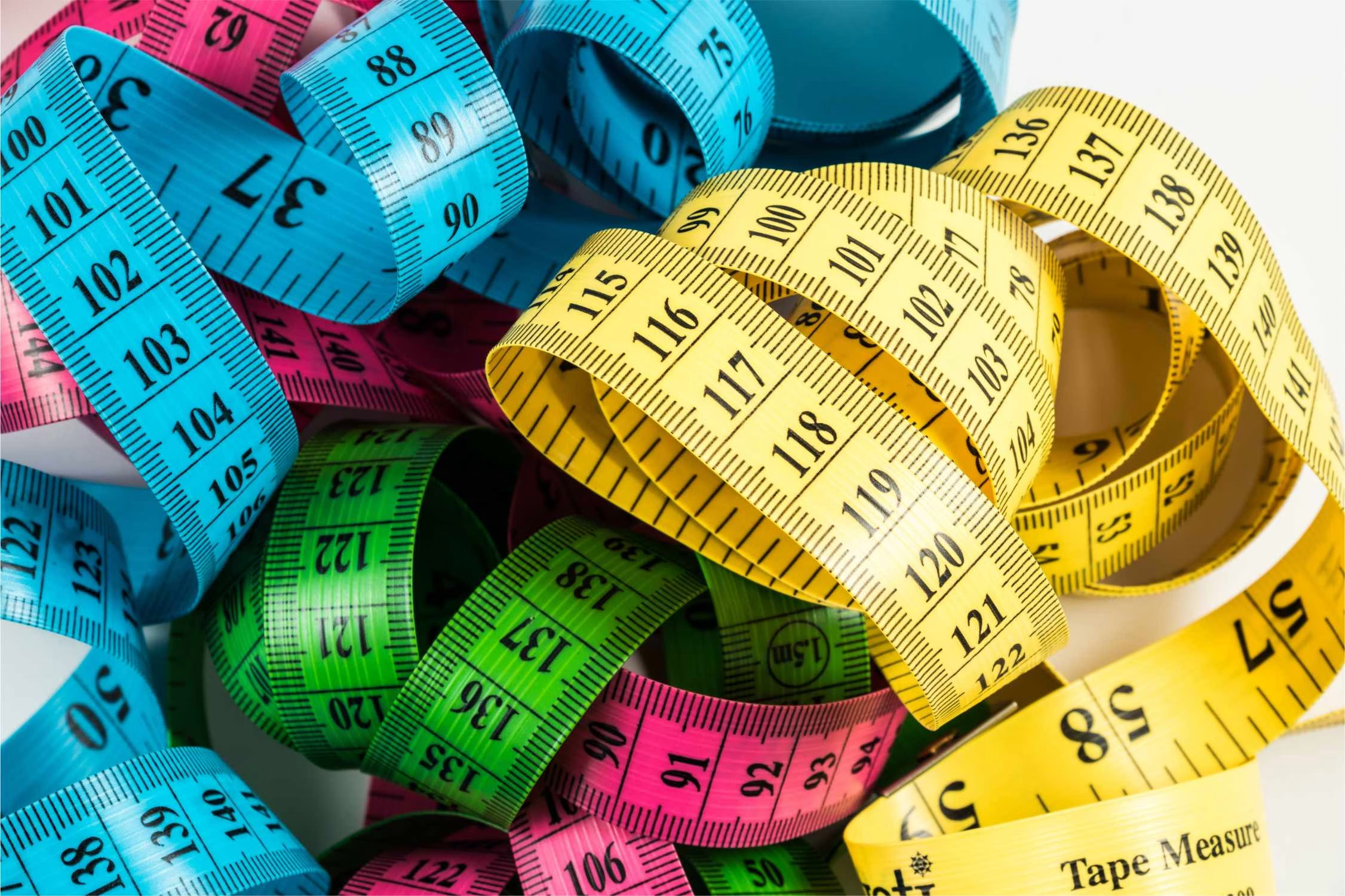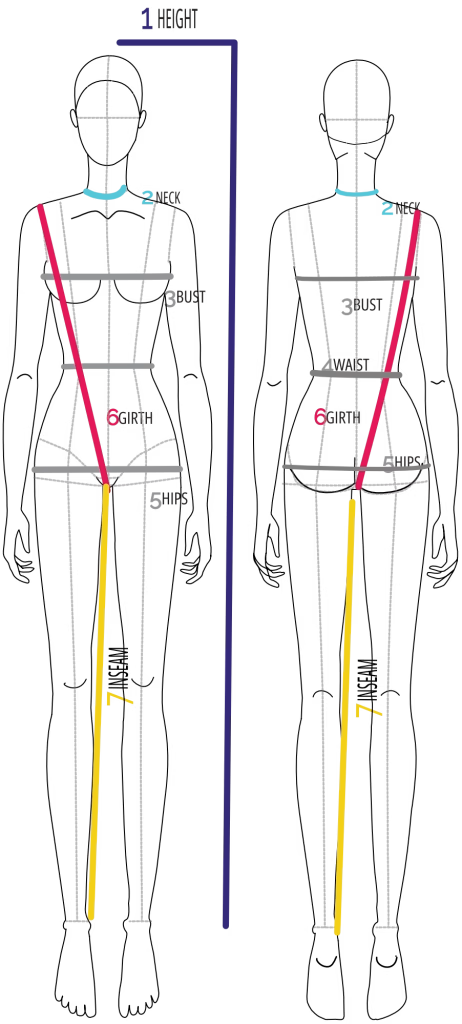
Measurements
Accurate measurements are crucial for a great fit—your dancewear should feel like a second skin!
For the best possible fit and accuracy, we recommend scheduling an in-person appointment for me to take your measurements if you’re local, or a virtual appointment if you’re not in the area. Please note that the measurements listed below may not be all that’s required for your custom dancewear, additional might be needed depending on the design.
How to Take Measurements
Equipment Needed:
An accurate vinyl or plastic tape measure (used for sewing/fashion). Avoid fabric tape measures, which can stretch and be inaccurate, or metal ones from hardware stores, which don’t wrap around the body properly. Ensure the vinyl tape measure isn’t old, frayed, cut, or warped.
A trusted person to assist with measuring (you should not measure yourself).
A sheet of paper and a pen or pencil or you can download solo or team form.

Tips for Measuring
Wear
Wearing what you normally wear under your costume (i.e. tights and a supportive non padded bra) or a fitted leotard or a bathing suit, is the best.
Friend
You should not measure yourself!!! When one measures themself, they tend to screw up their posture and get inaccurate measurements.
Start at “0”
Make sure you’re reading from right side of the tape. It may seem like a silly thing to bring up, but make sure you’re starting at the “0” end and reading out from it.
Close to Body
The tape should be snug against the body, without tightness but also without additional freedom.
No Twists or Dips
Make sure that the measuring tape goes straight around the body, no scooping or dipping anywhere, and that it doesn’t twist.
Stand up
You will want to stand up straight, feet flat on the floor, and the shoes you will wear to dance in.
Twice
Measure everything twice, to be sure.
No +/-
Report your actual current measurements as you read them. (If you want something tighter or looser for future date it is best to discuss any variances with the me.)
One Person
If you’re taking measurements for a team order, have one person take all the measurements.
Questions?
If there are questions, take a picture of the tape measure. It is very important to be exact and accurate. It is better to photograph/video tape the process — it will allow me to correct values of the inexact measurements. We are more the glad to set an appointment time for measurements locals and a virtual appointments for those that aren’t local.

What Measurements are needed?
1. Height
Height helps when creating basic leotard pattern.
2. Neck
Start at the narrowest point of the neck and go around the circumference of neck. The collar of the leotard is made from this measurement. If the measurement is greater than the narrowest point of the neck, the collar may not fit properly.
3. Bust
The measurement should be taken around the fullest part of the bust, typically at the nipple line. The person being measured should hold their arms out to the side, while the person measuring ensures the tape goes straight across the back, without dipping under.
4. Waist
Waist refers to the smallest part of your torso. If you do not have an obvious waistline, bend to one side. The point at which you bend over is your waistline. Please note, this is generally higher than where most people wear their pants.
5. Hip
Measurement for hip refers to the fullest (largest) measurement around your butt – NOT at your hipbone line. Again, measure straight around the body, ensuring the measuring tape doesn’t dip or scoop down at any point.
6. Girth
Girth or torso length is taken around the entire torso. Hold the the “0″ end of the measuring tape at the top of one shoulder, in the middle (think: where a bra strap sits). Run the tape down the front of the torso, between the legs, and up the back, ending at the beginning point on the shoulder for a full, closed loop.
7. Inseam
The inseam should be measured while the person being measured stands with their legs straight. Hold the starting end (0″) of the measuring tape so that the measurement begins right under the bottom of the crotch. Measure straight down the inside of the leg, ending in the middle of the ankle bone.
At the time of order, there may be several other measurements that may be needed. One of the great things about custom designed costume is the custom fit.
